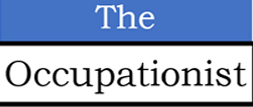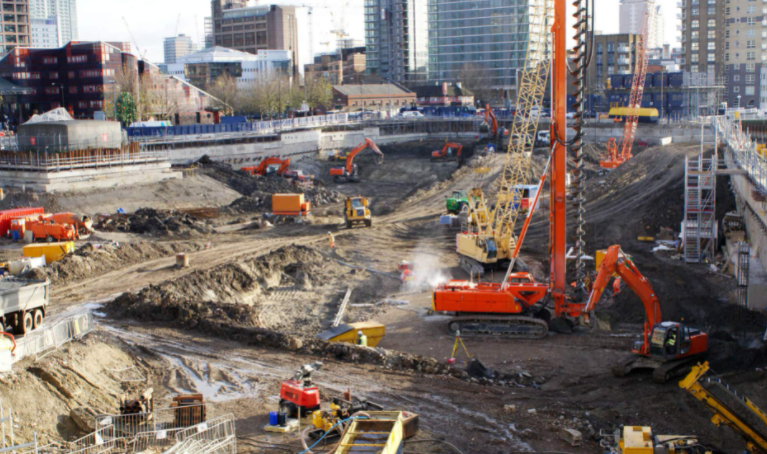Construction industry poses many hazards to its workers – noise, manual handling, stress, fatigue, and many more. In 2020, HSE (Health & Safety Executive) in UK (United Kingdom) reported that 81,000 construction workers suffered from work-related (occupational) ill health (new or long-standing) in 2020.
Those responsible for managing occupational health in construction should be aware of the common hazards and steps to be taken to prevent or minimize the harm.
Equally important is to understand the extent of mental illness in the construction industry as male construction site workers are three times more likely to commit suicide than the average UK male. Suicide kills more construction workers than falls from height.
Hence, mental health in the construction industry is just as important, and promoting good mental health is as important as promoting physical safety.
In India, lack of worker education and awareness adds an additional burden on their health – a lot of them are addicted to tobacco (chewing and smoking) and alcohol.
Construction companies must take steps to minimise risks inherent to construction industry to ALARP (as low as reasonably practicable) to protect construction workers’ health.
There are many hazards in the construction industry that can contribute to work-related (occupational) illnesses. Some of the hazards are listed below:
- Harmful materials: Exposure to asbestos, lead, dust containing silica, chemicals, sunlight, gases, exhaust emissions, if not properly controlled these can lead to skin problems, dermatitis, occupational asthma, occupational cancer, and lung disease including lung fibrosis.
- Noise: Prolonged exposure to noise can lead to noise induced hearing loss and tinnitus.
- Vibrating tools: Excessive use leads to Hand Arm Vibration Syndrome and vibration white finger.
- Manual handling: Frequent handling of heavy loads manually may give rise to musculoskeletal disorders. Training to adopt correct manual handling procedures is important.
- Stress and fatigue: If not managed properly, can lead to depression and anxiety.
- Lone working: Unsafe acts at work increases in absence of a buddy. It also helps sharing of strenuous work. Buddy is useful in an emergency situation.
- Unsafe acts: Fall from height, electric shock, being struck by a moving vehicle, and working in a confined space are dangers that can result in a broken bone or death.
- Inadequate working conditions: includes insufficient lighting, uncomfortable temperatures, shoddy accommodation (if construction site is in remote location), low wages and long working hours.
Employers must take steps to minimise these risks to ALARP (as low as reasonably practicable) and protect construction workers’ health.
Managing hazards at construction site involves:
- Making safety a priority
- Site supervisor to have daily Toolbox Meetings with workers
- Completing OHRA (occupational health risk assessment) before starting a project
- Knowing the difference between occupational illness and occupational safety
- Ensuring regular breaks are given to the workers to prevent exhaustion and reduce musculoskeletal issues
- Provision of potable water at site to prevent dehydration
- Provision of ablution facility at site
- Conducting regular site and equipment inspection to prevent illnesses and accidents
- Having a buddy system – for safety, sharing of work etc.
- Encouraging an open speak up culture – so that any potential high-risk concern is addressed before it leads to illness or an accident
- Provide necessary training and site supervisor to monitor high-risk construction activities
- Displaying resources – safety posters, first-aid availability etc.
- Provision of appropriate PPE and its enforcement where necessary
- Any other
Before construction work starts, site supervisor/HSE personnel should:
- Mitigate identified risks and identify new risks, if any and devise strategy to manage
- Ensure workers are trained – site specific and job-specific
- Ensure that the workforce has access to fit-for-purpose PPEs and know how to use them
- Observe, inspect and report that agreed safe work methods are implemented, site-wide
- Remind workers to stop work in case unsafe
- Ask if anyone is feeling unwell
At the site, employees, contractors and visitors should receive information about the site hazards and steps taken to control those risks. Also, briefing them about the hazards, PPEs, welfare facilities and site rules can ensure that the work in progress is safe.
Keeping worker health in the construction industry in mind, Tata Housing, India’s real estate construction company, signed a MoU with the National Safety Council of India (NSC) in 2013 to create awareness and promote the cause of environment, health and safety (EHS) in the Indian real estate industry.
The agreement is Tata Housing’s persistent efforts to make EHS rules and regulations a priority for the real estate industry.
The MoU was signed in 2013 between Brotin Banerjee, MD and CEO, Tata Housing, and VB Sant, Director General, National Safety Council.
Mr Banerjee, while signing the MoU said, “The Tata group being a pioneer of employee welfare approach in India, EHS naturally ranks on top as one of the group’s core philosophy of doing business. In line with the group’s ethos, we at Tata Housing are looking at building the most effective approach for building an EHS-conscious industry. We are partnering with NSC to institutionalise occupational health standards which will help to inculcate a safety culture within the real estate sector.”
Mr Banerjee further added, “Through this MoU, NSC, along with Tata Housing intends to ensure that compliance of health, safety, security and environment regulations is on a sustainable level and not a one-time practice. We endeavour to achieve these objectives by propagating these messages through training modules and educational elements such as training videos, onsite physical training, etc. amongst lakhs of construction workers working across construction sites all over India.”
On part of the workers, they should work diligently, be alert to surrounding activities, stop unsafe work, take breaks, drink water, sleep well before reporting to work, and last but not the least to report to the site supervisor if feeling unwell.
In India, small and medium scale construction contractors do not have the awareness and the necessary bandwidth (the technical resources and finances) to establish most of the mitigation measures mentioned above.
To know more, MSMEs and large corporation may contact
_________________________________________________________________________________________________________
Dr Ajay Sati is an Occupational Health physician who prefers to describe himself as an Occupationist, to denote, ‘an expert in diseases and other concerns of occupations’. Dr Sati has managed health and wellness programs in industries he worked, like the atomic energy, and energy (oil & gas) in India and overseas. He was involved in many greenfield and brownfield projects providing inputs from health point of view. Known for SOPs and protocols, he is currently involved with an energy MNC in designing protocols to support employees during the covid pandemic, and protocols to safely reopen offices and plants.



